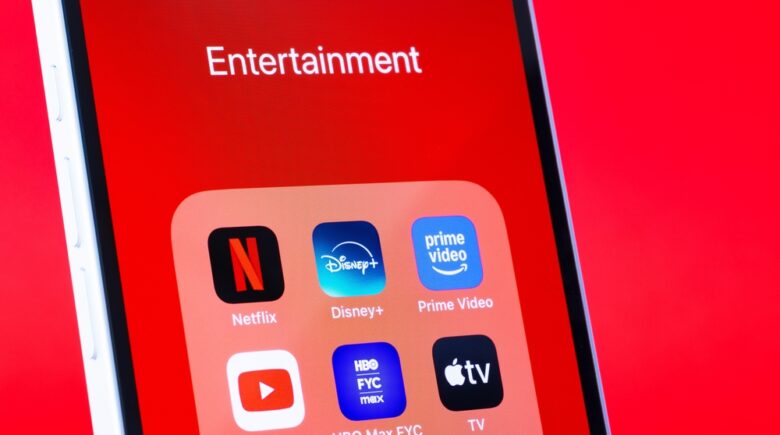Remember when Netflix was your only streaming subscription? Those simpler days feel like ancient history now. The average American now juggles multiple streaming services, meal kits, fitness apps, cloud storage plans, and countless other recurring charges. According to recent data from C+R Research, consumers underestimate their monthly subscription spending by about $133. Moreover, many people can’t even remember all the services they’re paying for. This phenomenon, known as subscription fatigue, has become a significant drain on household budgets. Fortunately, you can regain control without sacrificing the conveniences you genuinely value. This guide will help you audit your recurring expenses and make strategic cuts that protect both your wallet and your lifestyle.
Why Your Subscriptions Are Draining Your Wallet
The subscription economy has fundamentally transformed how we consume products and services. Companies have shifted from one-time purchases to recurring revenue models because they’re incredibly profitable. Consequently, businesses across every sector—from software to razors—now offer subscription options. This shift benefits companies through predictable cash flow, but it often disadvantages consumers who lose track of mounting monthly charges.
Digital payment systems have made subscribing dangerously frictionless. Furthermore, many services offer enticing free trials that automatically convert to paid subscriptions. You might sign up for a seven-day trial and completely forget about it until months later. Credit card companies and banks have started offering subscription tracking features, yet many consumers still don’t actively monitor these charges. The “set it and forget it” nature of automatic payments creates a perfect storm for budget leaks.
Additionally, subscription creep happens gradually, making it harder to notice. You add one service this month, another next quarter, and suddenly you’re spending hundreds monthly. The psychological impact of small recurring charges differs significantly from large one-time purchases. A $15 monthly fee feels insignificant compared to a $180 annual payment, even though they’re identical. This cognitive bias makes subscriptions feel more affordable than they actually are, ultimately leading to overspending.
The Smart Way to Audit Your Monthly Expenses
Starting your subscription audit requires gathering comprehensive data about your spending. First, review three months of bank and credit card statements to identify all recurring charges. Many banks now categorize transactions automatically, which simplifies this process considerably. However, don’t rely solely on automated categorization—manually review your statements to catch everything. Some subscriptions bill quarterly or annually, so examining multiple months ensures you won’t miss anything important.
Next, create a detailed spreadsheet listing every subscription you discover. Include the service name, monthly cost, billing date, and whether you actively use it. Be honest about usage patterns—that meditation app you opened once doesn’t count as active use. Calculate your total monthly and annual subscription costs to see the complete picture. This number often shocks people into action because seeing the aggregate amount makes the impact undeniable.
Once you’ve compiled your list, evaluate each subscription using a value-based framework. Ask yourself three critical questions: Do I use this regularly? Does it provide significant value relative to its cost? Could I access similar benefits through free alternatives or services I already own? For streaming services, consider whether you watch enough content to justify multiple platforms. Similarly, examine whether your gym membership makes sense if you prefer home workouts. This evaluation process helps you distinguish between subscriptions that enhance your life and those that simply drain your account.
Strategic Cutting Without Sacrificing Value
After identifying subscriptions to eliminate, implement a strategic cancellation plan. Rather than canceling everything immediately, prioritize cuts based on usage and value. Start with services you haven’t used in the past month—these represent the easiest wins. Then, tackle subscriptions with free or cheaper alternatives available. For instance, many people maintain both Spotify and Apple Music when one would suffice perfectly well.
Consider rotation strategies for entertainment subscriptions instead of maintaining them year-round. Subscribe to Netflix for two months, binge your favorite shows, then switch to Hulu or Disney+. This approach, sometimes called “subscription hopping,” lets you access content from multiple platforms while paying for only one at a time. Additionally, many streaming services offer discounted annual plans if you prefer keeping certain subscriptions permanently. Paying annually often saves 15-20% compared to monthly billing, though it requires upfront payment.
Negotiation represents another powerful tool for reducing subscription costs without losing access. Many companies offer retention discounts to customers who threaten cancellation. Call customer service and explain you’re considering canceling due to cost—you’ll often receive a promotional rate. Furthermore, look for family or group plans that split costs among multiple users. Services like Spotify, YouTube Premium, and cloud storage providers offer family plans that significantly reduce per-person costs. Just ensure you trust the people you’re sharing with to maintain payment arrangements.
Maintaining Control Over Future Subscriptions
Preventing subscription overload requires establishing systems that maintain long-term control. Set up calendar reminders for trial periods so you can cancel before charges begin. Most services send confirmation emails when you subscribe—create a dedicated email folder for these confirmations. This centralized location makes future audits much simpler and helps you track what you’re paying for.
Implement a “one in, one out” rule for new subscriptions moving forward. Before adding any new service, cancel an existing one of equal or greater value. This policy prevents subscription creep and forces you to evaluate whether new services truly deserve space in your budget. Additionally, schedule quarterly subscription audits to catch any services that have stopped providing value. Treating these audits like regular financial check-ups keeps your recurring expenses aligned with your current needs and priorities.
Finally, leverage technology designed to help manage subscriptions effectively. Apps like Truebill (now Rocket Money) and Trim automatically identify subscriptions and can even negotiate bills on your behalf. These services typically charge a percentage of savings they generate, but many users find the convenience worthwhile. Alternatively, use free tools built into banking apps or credit card platforms. Many financial institutions now offer subscription tracking features that alert you to recurring charges and spending patterns. These tools transform subscription management from an overwhelming task into a manageable routine.
The Fintech Revolution in Subscription Management
The fintech industry has recognized subscription overload as a significant consumer pain point. Consequently, innovative solutions continue emerging to address this challenge. Virtual card services like Privacy.com let you create unique card numbers for each subscription, making it easier to track and cancel services. When you cancel through the platform, the merchant can no longer charge that specific card number, eliminating the hassle of updating payment information.
Moreover, regulatory attention to subscription practices has increased substantially in recent years. The Federal Trade Commission has proposed rules requiring clearer cancellation processes and more transparent pricing. These “click-to-cancel” regulations would mandate that canceling subscriptions be as easy as signing up. Such changes would significantly empower consumers and reduce the friction that currently makes subscription management difficult.
Looking ahead, expect more sophisticated tools for managing digital finances and recurring expenses. Banks are integrating AI-powered insights that predict spending patterns and suggest optimization opportunities. Some institutions now offer subscription pause features that temporarily freeze payments without full cancellation. These innovations reflect growing recognition that subscription management represents a critical component of modern financial wellness, particularly for millennials who grew up with digital services.
Taking control of your subscriptions doesn’t mean abandoning all conveniences or entertainment. Instead, it means being intentional about where your money goes each month. By conducting regular audits, you ensure that every recurring charge delivers genuine value to your life. The subscription economy isn’t disappearing—if anything, it will continue expanding into new categories. However, armed with the right strategies and tools, you can enjoy the benefits of subscription services without letting them silently drain your financial resources. Start your audit today, and you’ll likely discover hundreds of dollars annually that could better serve your financial goals, whether that means building an emergency fund, investing for the future, or simply having more breathing room in your monthly budget.
References
- C+R Research. “Consumer Subscription Spending Study.” NerdWallet. https://www.nerdwallet.com/article/finance/subscription-spending
- Federal Trade Commission. “FTC Proposes Rule to Make It Easier to ‘Click to Cancel’ Recurring Subscriptions and Memberships.” FTC.gov. https://www.ftc.gov/news-events/news/press-releases/2023/03/ftc-proposes-rule-make-it-easier-click-cancel-recurring-subscriptions-memberships
- Dickler, Jessica. “Americans are spending more than ever on subscriptions. Here’s how to save.” CNBC. https://www.cnbc.com/2023/05/24/how-to-save-money-on-subscription-services.html

